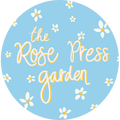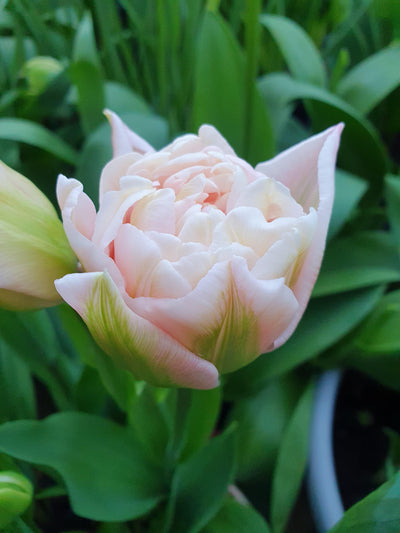Gardening Sustainably
With climate change a prevalent issue in our modern world, us gardeners want to do all we can to help wildlife and the planet in our small spaces. While it may seem a big issue and a daunting prospect, it doesn’t have to be such, and small changes and additions to your garden and your routine can ensure that you play your part and give back to the planet. There are obvious, and justifiably popular changes - like eliminating chemicals in your growing - which are frequently publicised and rightly advocated. But there are smaller things you can partake in too, to ensure that your carbon footprint is just that bit lighter this gardening year.

Growing organically is perhaps the basis, the grounding for gardening sustainably. Pesticides, herbicides, slug pellets and weedkillers are often toxic and always harmful to your plants, your soil, wildlife, and arguably even to you. Detoxing your growing space by boycotting harmful substances will enrich the mineral content of your soil, allowing wildlife to thrive. Removing weeds by hand or using natural alternatives (such as chilli flakes or garlic spray) to get rid of unwanted visitors may be time consuming, but is certainly more rewarding, for you and the planet. A study from Wyevale Garden centres has revealed that more than ¾ of gardeners don’t use chemicals in their gardens, with 46% opting for organic fertilisers as an alternative. Sustainability stems from what you give to the soil and what traces you leave behind – start by eliminating your toxic footprint!

So, you don’t use chemicals, you use organic pest control, and you want to help your soil even further? What now? While it seems unlikely, mulching is key to a sustainable garden. It locks in moisture and heat, meaning less energy is required to maintain the plants come the inevitable summer heatwaves. In addition, the micro-bacteria and minerals in the soil multiply exponentially when goodness (such as horse manure, bark chippings, leaf mould or mushroom compost) is introduced – not to mention your garden looks beautiful too!

Now onto the best bit – the plants! If you want to be truly sustainable in the way in which you source your plants – growing from seed is key. With a considerably low carbon footprint to pack and transport, seeds are much more environmentally friendly than their mid-summer, pot grown alternatives (which have often consumed lots of energy and chemicals to get them to retail condition). Plastic will be saved, and with just a bit more time and nurturing, then your plants grown from seed will immediately surpass those on display at the nursery (maybe not in immediate colour, but certainly in health).

The various amalgamation of pots, seed trays, and the like is inevitable when sowing seeds, pricking out and potting on. Coir pellets are an excellent option for biodegradability, allowing you to plant the entire pod into your soil, which will eventually break down and allow the roots to grow through its web-like netting. Although, one thing to bear in mind is that coir comes from the coconut industry, perfect for utilising by-products which would otherwise be wasted, but often involving many air miles to get to your garden. But, while the hardcore environmentalists may eliminate plastic from their garden altogether, this may not be necessary. The same way that they say that the most sustainable clothes are the ones you already own, this arguably applies to your plastic pots too. If they are washed and carefully stored, there is no reason why plastic pots in your garden can’t last you numerous seasons – saving you the need to go out and buy more biodegradable ones after each use! It is entirely the gardener’s preference but do think twice before you throw away any plastic pots (which could end up in landfill) and if you must, recycle them!
So, now you’ve cut out pesticides, enriched your soil by mulching, grown from seed (using reused pots or biodegradable alternative), and now it’s time for planting! Like plastic pots, if properly cared for, tools in the garden can last years and eliminate the need for you to buy new every few seasons. It helps if you can buy good quality products to begin with, and an increased durability will aid in ensuring that the products last year after year.
But finally, what to plant? In order to be sustainable, it all boils down to Beth Chatto’s famous line ‘right plant, right place.’ If you plant a moisture-loving hydrangea in hot and dry conditions, then the energy and water required to sustain it throughout the summer is not economical and not sustainable. Instead, choose a plant which thrives in arid conditions, such as yuccas, grasses, or sedums, saving considerable amounts of water.
These are merely a few suggestions about how you can play your plant in conserving our beautiful ecosystem, starting with your own patch of earth. There are a myriad of ways in which you can be more sustainable and reduce your own carbon footprint, even growing your own food and cut flowers really cuts down on reliance on imports grows unsustainably. It may seem that time and money must be invested in order to really become organic, but that is simply not true, as anything invested truly pays back and benefits you, the planet and the future for years to come, making it fundamentally cheaper to be green.
...





Leave a comment